How will museums of tomorrow tell the Covid pandemic story?
- Published

Hand-made paper and cardboard dolls house created by a child using a downloadable file to show home life during the pandemic
Covid's arrival in early 2020 threw organisations and businesses into turmoil. But while most workers grappled with furlough, social distancing and working from home, a small band of museum officers sensed history was in the making. This is one museum service's story of trying to collect items in real-time to capture the pandemic story for future generations.
Wayne Kett had been a curator for just two months when Covid-19 reached the UK.
"I was obviously not expecting to set up major contemporary collecting project," Mr Kett, who works for Norfolk's museums service, said. "It was not on my to-do list."

A toilet roll made by the company Who Gives A Crap, collected as a reminder of the early days of lockdown in which there was a shortage of toilet rolls
Norfolk Museums was one of a number of local authority services which responded to the BBC's request under the Freedom of Information Act about Covid-related acquisitions during the pandemic.
Some services collected very little. Colchester Museums, for example, acquired just one item - a medical scrubs bag, while West Northamptonshire Council accessioned six items including a pair of nurses shoes and a social distancing sticker.
Norfolk Museums, however, collected a vast trove of items ranging from digital photographs, to personal written testimonies, to physical objects such as signs, clothing and equipment.
Nobody thought a ration book or a gas mask was interesting in 1945 - everybody had them and they were mundane objects."
Many of the items were everyday items during the pandemic. They include masks, testing kits, signs, a toilet roll and medial scrubs. But their future value should not be underestimated, Mr Ketts says.
"Nobody thought a ration book or a gas mask was interesting in 1945," he says.
Mr Kett remembers the earliest days of the pandemic.
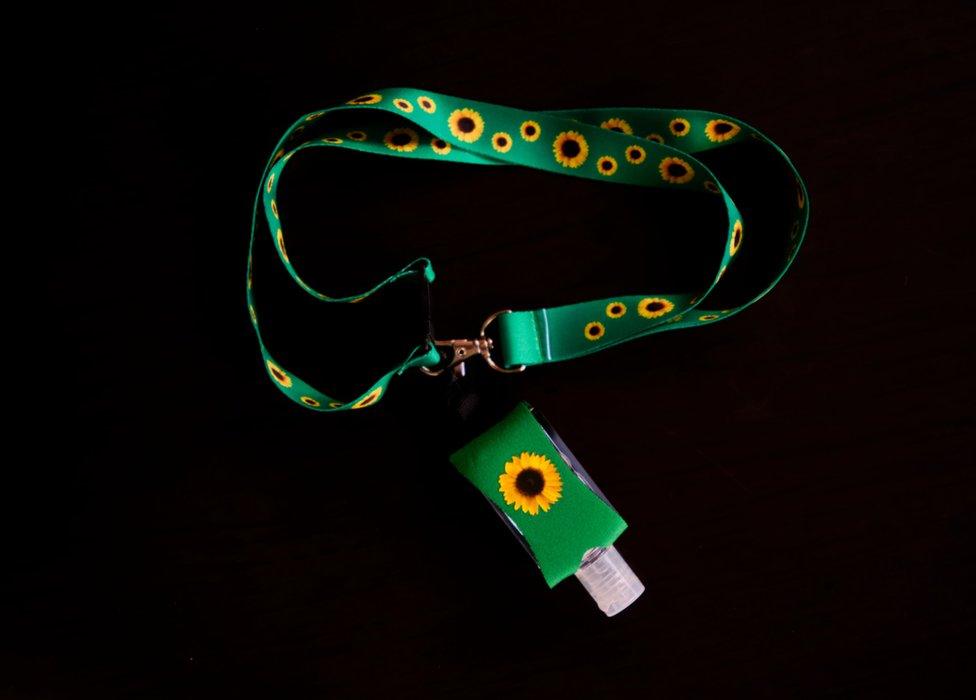
A green and yellow lanyard with sunflower motif which denoted a hidden disability. This lanyard also has a small hand sanitiser bottle held in a neoprene sleeve

A floor graphic supplied by the Norwich Business Improvement District to city businesses and organisations to help them manage social distancing measures
"When we first got sent home I think we thought it would be two or three weeks and then we would go back to the office," he says.
The penny then dropped. History was in the making and it needed to be preserved.
"It was really important to capture that information while it was happening to people and while people were experiencing it - there's a lot of value to that," Mr Kett said.
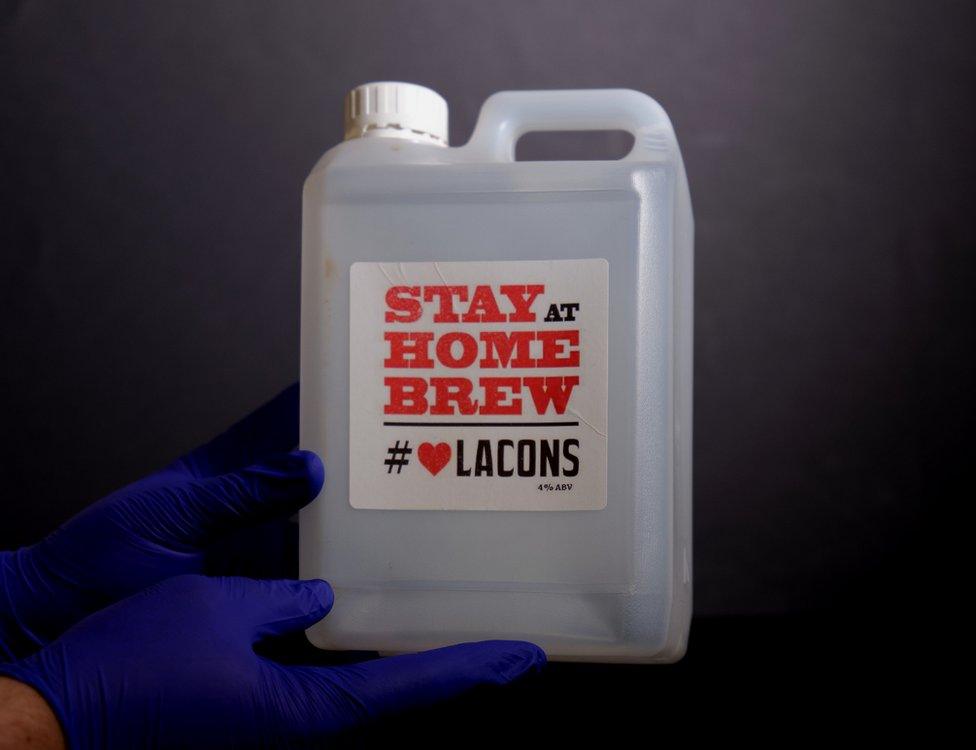
One of Mr Kett's favourite items is an unremarkable opaque plastic container from the Great Yarmouth brewer Lacons
One of of Mr Kett's favourite items is an opaque plastic container from the Great Yarmouth brewer Lacons.
"The company did something called a 'Ding, Dong Dash'," he says. "They were going to have tip a load of beer down the drain.
"Instead, they filled up containers full of beer and you could apply online and they would ring your doorbell and you got four pints of beer on your doorstep."
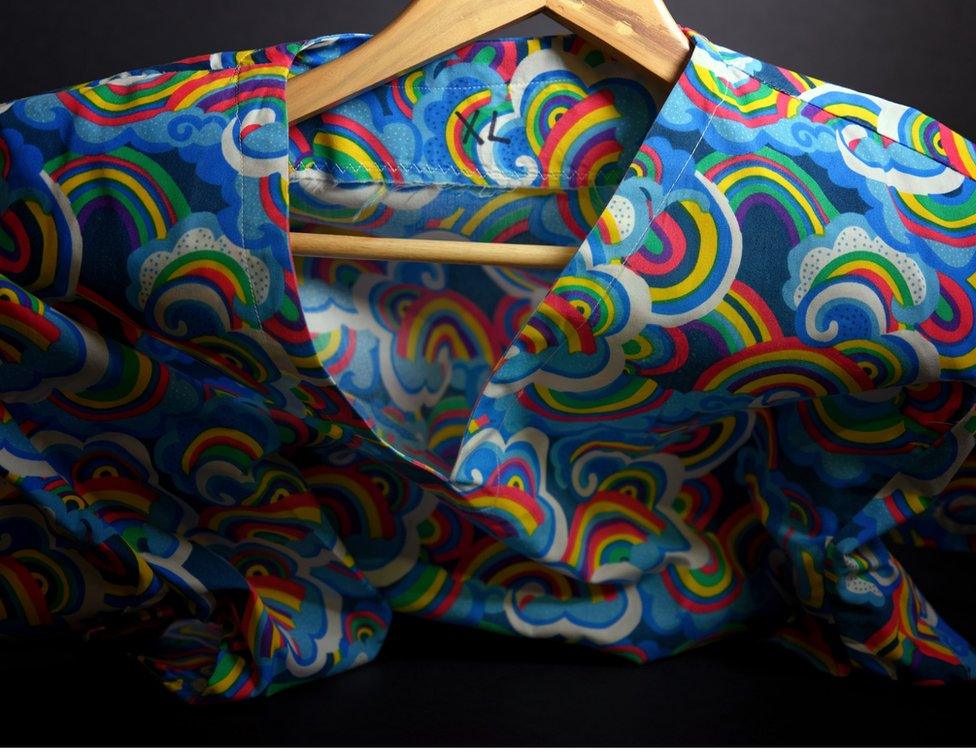
At one point during the pandemic Norfolk Scrubs was the main supplier of PPE and scrubs for the James Paget Hospital, Mr Kett said
He is also fond of the various examples of personal protective equipment (PPE) lovingly sewn by volunteers across the county under the aegis of the volunteer group Norfolk Scrubs.
"At one point during the pandemic Norfolk Scrubs was the main supplier of PPE and scrubs for the James Paget Hospital," he says.
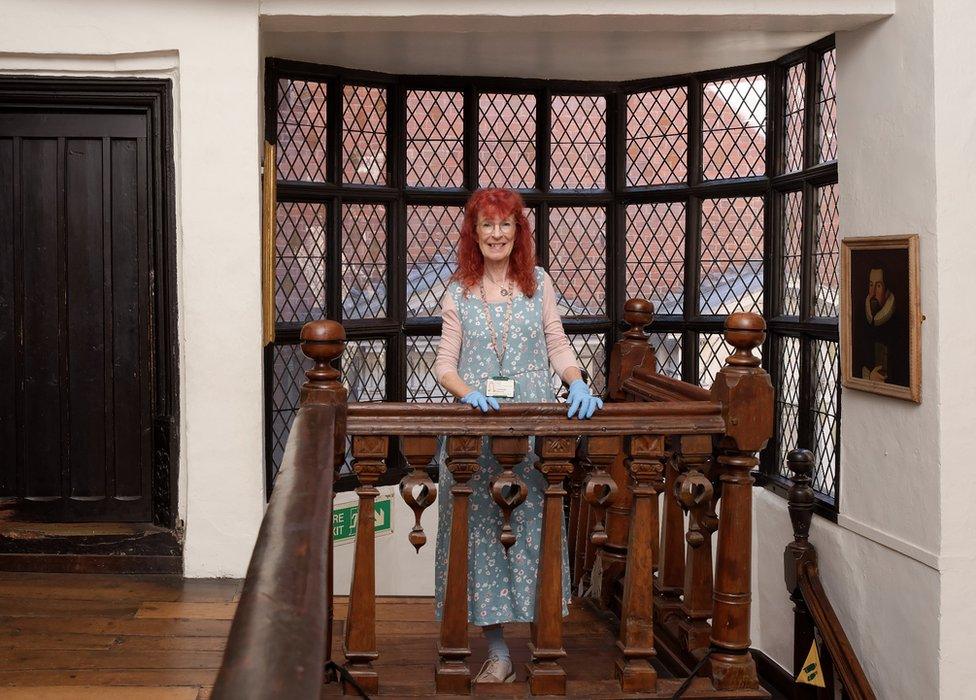
Cathy Terry, senior curator in social history, says her focus was on trying to "get a broad idea of what was going in people's homes"
Cathy Terry, senior curator in social history, says her focus was on trying to "get a broad idea of what was going in people's homes".
To help achieve this, a survey was set up asking about people's lives during the pandemic.
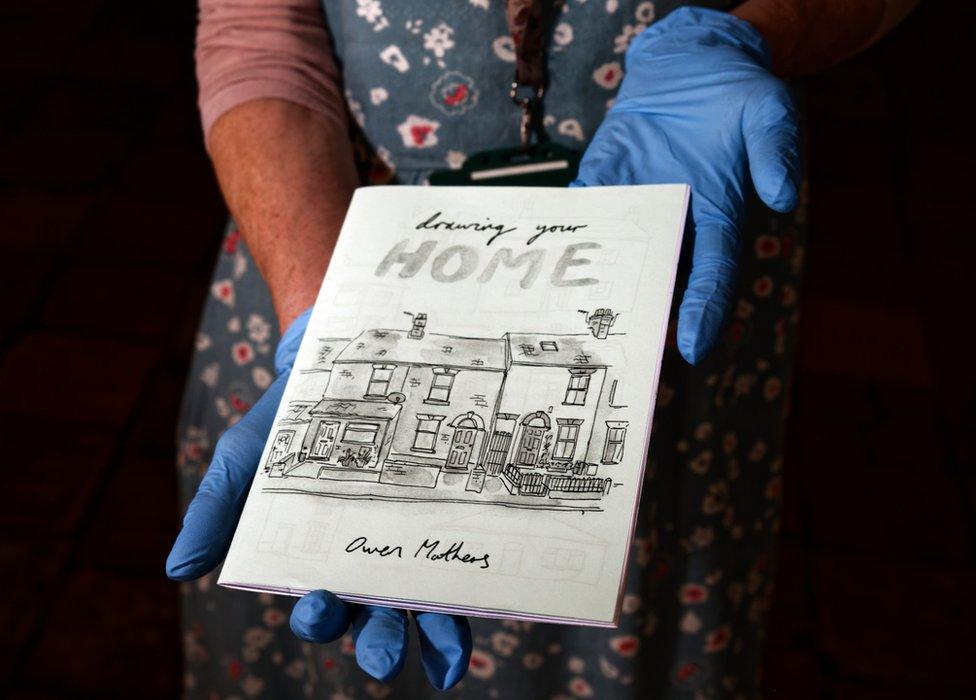
A booklet by local illustrator Owen Mathers designed to inspire people to draw and record aspects of their home and home
"We got a very varied set of responses," Ms Terry said.
"People were getting to grips with it, thinking outside the box and doing their best.
"An awful lot of people were following the guidance to the letter."
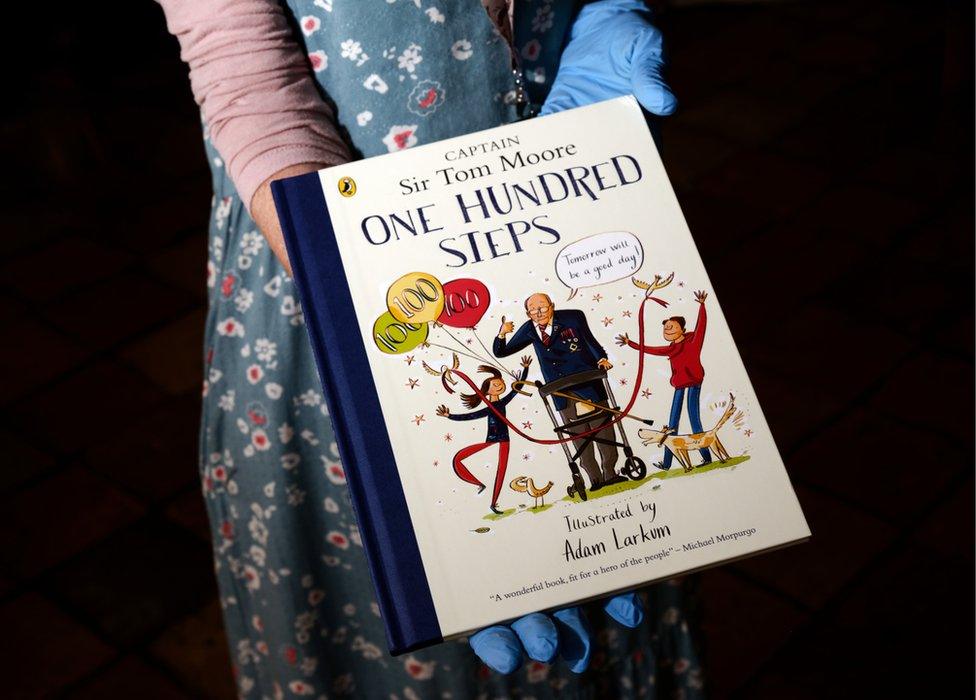
Children's book about the life of Captain Sir Tom Moore, who walked 100 laps of his garden using a walking frame
In terms of lockdown, some responders admitted to enjoying "having a break from family" while others "found it really difficult", she says.
"I think it was the first time we and the rest of the world were physically and legally affected by an illness," Ms Terry says. "This was completely new."
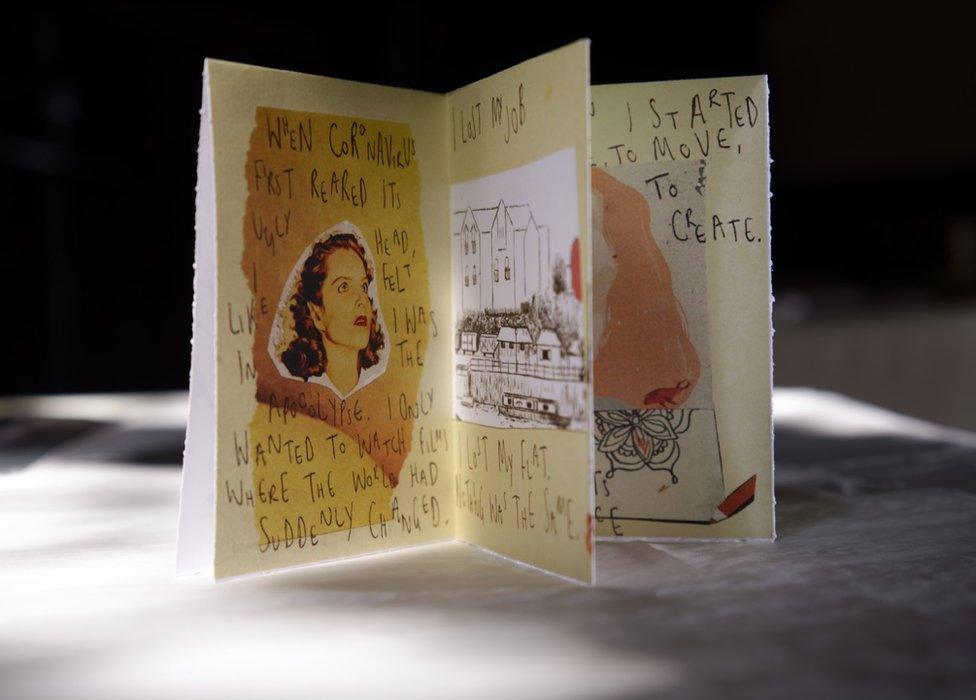
A small illustrated story of lockdown life in created by @This.Is.Your.Life from folded single sheet of paper featuring quarantine, losing job, recovery, creativity during the lockdown
The items that resonate most for Ms Terry were the pictures of new hobbies people took up and the things people made.
"These were things that made people feel all right," she said. "They were often things people had been putting off doing or trying for a long time."

A child's drawing of how the coronavirus pandemic had affected him was also collected
As as collecting a large range of local and national newspapers, the museum service also collected a copy of the conspiracy newspaper The Light and various anti-vaccine and anti-mask wearing material.
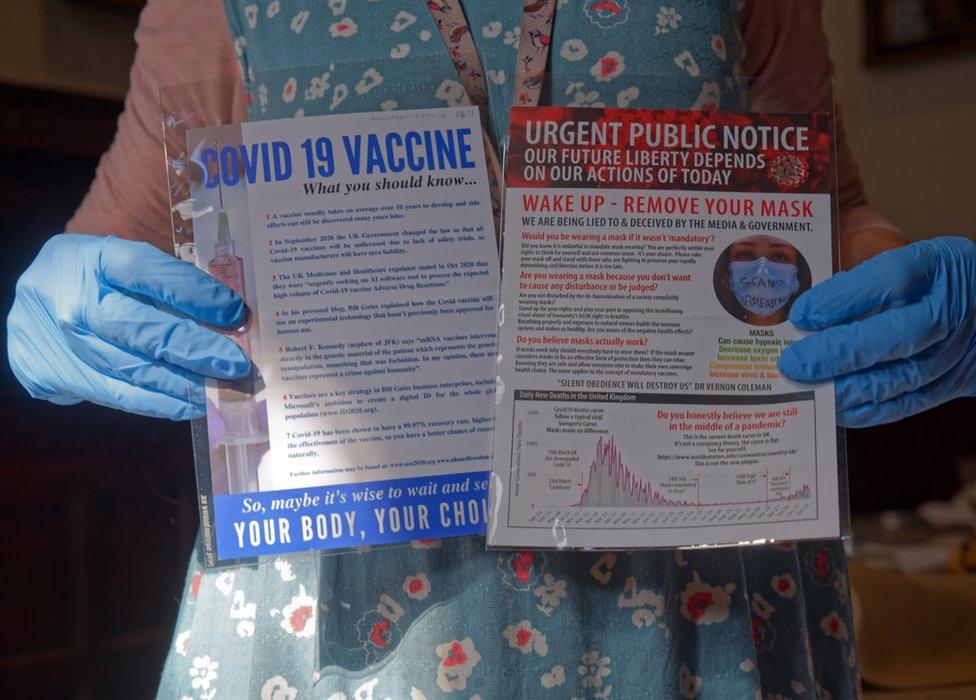
The collection contains anti-vaccine and anti-mask wearing material
Philip Miles, eastern area curator, says: "If you look back to World War Two, museums did collect propaganda posters.
"It is important to tell all stories from all sides and to illustrate that not everybody was necessarily compliant in following government advice because that makes up part of the story."
Asked what story he hoped the collection would tell future audiences, Mr Miles said: "I hope the collection will show that community effort to overcome what was a very difficult time for everyone."
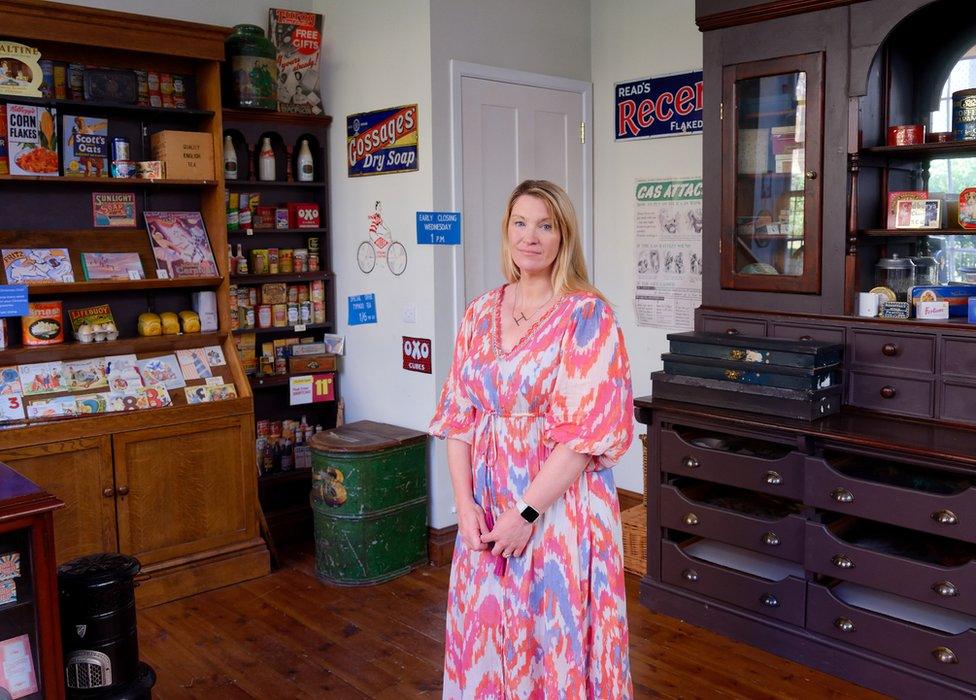
Hannah Henderson says there remains a great deal of work still to be done to make sense of all of the material collected during the pandemic
Hannah Henderson, curator of community history, says: "It was more than just trying to collect items in a historical and curatorial way.
"Yes we wanted to do that, but it was also about reaching out to find out about people's experiences."
She says the service sought out examples of mutual aid which were often "intangible".
"While we have collected a lots of three-dimensional objects, we have also collected a bank of photographs taken at the time and digital assets of posters, youth projects or about mutual aid projects," Ms Henderson says.
"Museums always prioritise the physical stuff because that's what people expect to see," she says. "But at the same time, a lot of the stuff that actually moves me are the photographs of empty streets and shops.
"It has made me realise there really is more work to do to make sense of it all."
Photography: Laurence Cawley

Follow East of England news on Facebook, external, Instagram, external and X, external. Got a story? Email eastofenglandnews@bbc.co.uk, external or WhatsApp us on 0800 169 1830